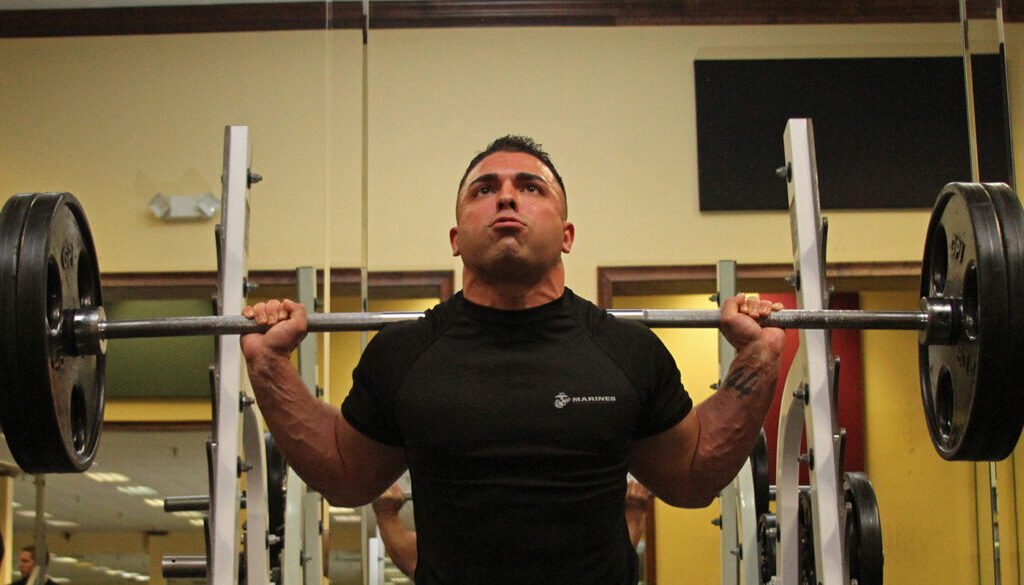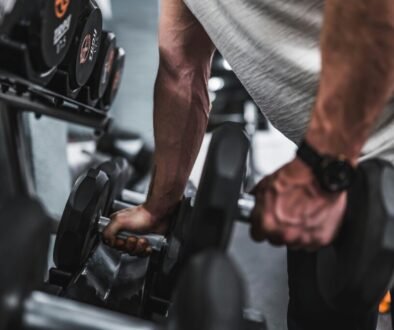Reverse Band Squats: Benefits, Technique, Muscles Worked
Table of Contents
What are Reverse Band Squats
The reverse band squat is a strength-training exercise that uses resistance bands to reduce weight at the bottom of the lift while maintaining full resistance at the top. Resistance bands are attached from the top of the squat rack to the barbell (inside the weights). This ensures more volume and intensity and lowers the inherent risks of joint pain. By assisting during the most strenuous part of the movement, reverse band squats improve explosiveness, enhance proper form, and allow the user to reach new weight heights with less physical strain. This extended muscle activation can lead to better time under tension and more long term muscle development.
- The eased resistance allows for more controlled movements to increase time under tension and further muscle hypertrophy
- Uses bands to lower the weight tension at the bottom
- Is still performed the same as way as the standard barbell squat
Benefits of Reverse Band Squats
- Gradual Overload Training – enable lifters to increase their weight load safely by reducing the force at the bottom of the squat.
- Reduced Joint Stress – Assists during the deepest part of the movement, reducing the likelihood of knee or lower back strain.
- Improves Explosiveness & Power – The extra support provides the lifter with more upward momentum (great for athletes and power lifters).
- Reinforces Proper Form – Helps maintain proper form, especially if you struggle with depth and mobility.
- Increased Time Under Tension – Greater control during the lowering phase, which can increase time under tension and muscle growth over time.
Muscles Worked
Reverse band squats target multiple muscle groups- just like a normal barbell squat- with an increased emphasis on core stability.
- Quads
- Glutes
- Hamstrings
- Stability muscles (core and lower back)
- Inner thigh muscles
- Calves
How to Set Up Reverse Band Squats (Steps)
- Pick The Right Equipment – A sturdy squat rack, resistance bands (weak, moderate, or strong – depending on level of assistance), and a barbell.
- Attach the Bands to the Top of The Rack – Loop it around the top of the rack (make sure its tight!)
- Secure Bands to The Bar – Make sure they are held with equal tension near the end of the bar, but inside the plates.
- Add Weight – It is likely that you will be able to lift more than your standard squat.
- Perform The Workout – Carry on as if you were squatting normally and re-rack the bar safely when completed.
Common Mistakes & Solutions
If the bands are not securely attached to the top of the rack they could fall off mid-set, creating a dangerous situation.
Solution: Double loop the bands at the top of the rack and make sure the bands are sturdy with no tears.
Reverse Band Squats vs. Regular Squats – Which is Better?
There isn’t necessarily a substantially “better” method when it comes to squatting with or without band assistance. The effectiveness depends on individual factors such as experience in the gym, mobility level, and fitness goals. If you’re looking to build overall maximal strength, perform normal squats. If you desire more explosiveness, stability, and ease, you may benefit from reverse band squats more. It’s also important to consider that reverse band squats are a lot more easier on joints and muscles, making it a great exercise when experiencing injury rehabilitation and typical fatigue.
The muscle activation is also engaged differently, as normal squats are primary compound movements, equally engaging your core, quads, hamstrings, and glutes. Banded squats increase glute activation from the lateral tension of the band, also improving stability and coordination. Overall, both movements allow you to increase strength and hypertrophy, but reverse band squats decrease resistance which may not suffice for maximal strength gains in some cases.
Who Should Do Reverse Band Squats?
- Power Lifters – Helps overload the top portion of the squat and could help boost confidence under heavier loads.
- Lifters Who Struggle to Stand Up From The Bottom – If you fail regular squats, assisted squats can help you practice and build strength.
- Lifters Who Want More Development – Allows for higher reps and can increase time under tension.
- People With Joint Issues – Reduces joint strain at the bottom of the movement.
- Explosive Athletes – Trains explosive force by allowing for a quicker ascend.
Conclusion
Overall, reverse band squats are a great form of training for lifters to increase hypertrophy, explosiveness, and reduce muscle and joint strain. With assistance at the bottom of the movement, these squats allow you to reach new plateaus while maintaining proper form. If you’re looking to build explosive power while increasing strength, reverse band squats may offer a unique advantage over traditional barbell squats. Give them a try a now, to explore their benefits!
Have you tried these workouts? If so, what are your takeaways? Let us know in the comments.

